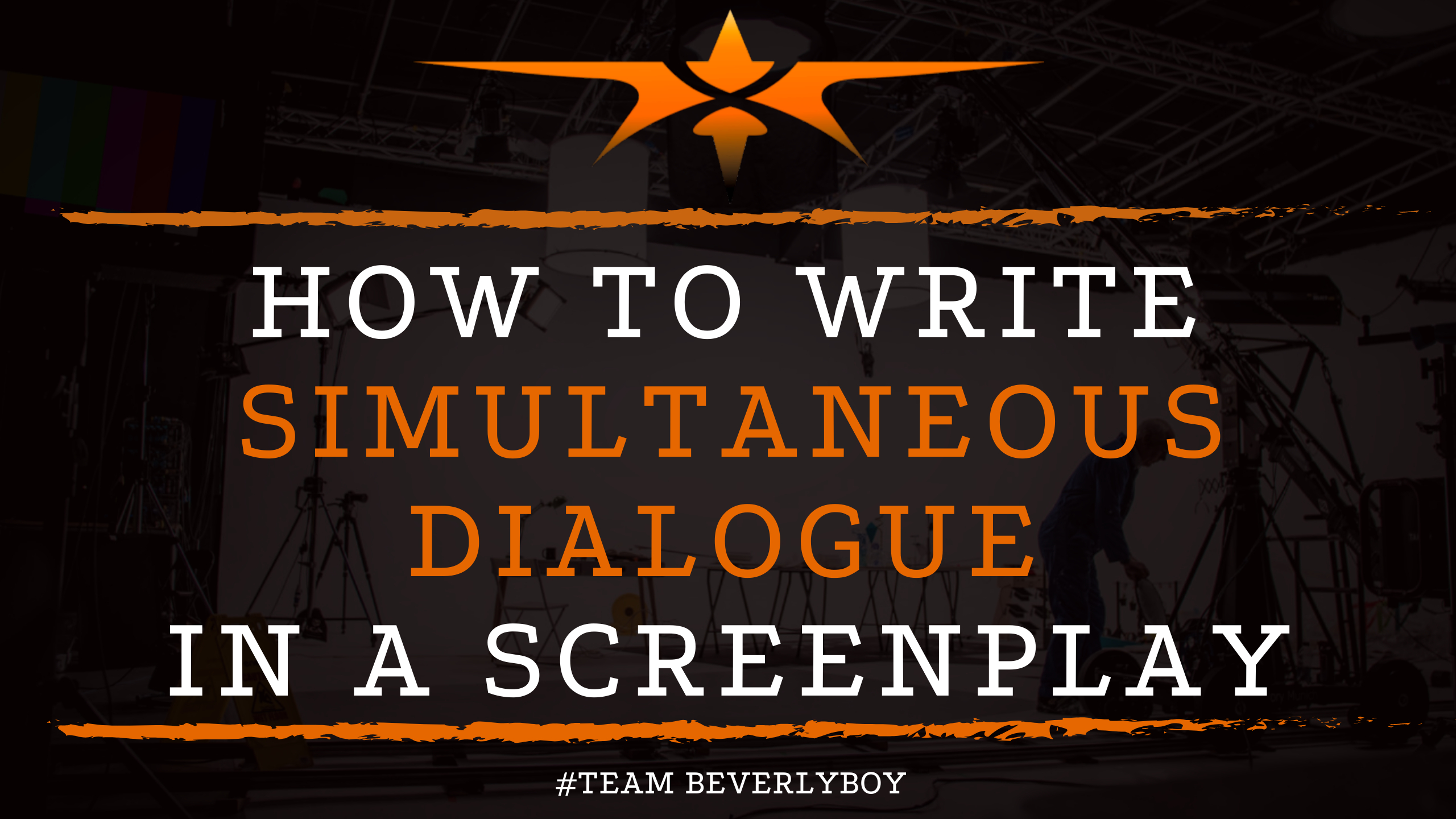
How to Write Simultaneous Dialogue in a Screenplay
Not all dialogue is single sided or simple when it plays out, and the same is true for screenwriting. Learning how to write simultaneous dialogue in a screenplay is an important step for any screenwriter looking to enhance their dialogue and improve their screenwriting skills. How does a screenwriter denote that the dialogue taking place between two or more characters is occurring simultaneously?

As complicated as this sounds, there are ways for a screenwriter to denote a simultaneous dialogue that is taking place between characters. Learning how to write simultaneous dialogue in a screenplay is an important element that will bring your screenwriting to the next level.
To avoid confusing the reader, clarity is vital! In fact, clarity becomes the overriding principle in this matter. The best way to keep the dialogue clear, and to maintain clarity of who is speaking, when & what they’re saying, the dialogue is referenced side by side as dual dialogue.
While most screenwriting programs have a unique way of achieving this, it’s important for the screenwriter to know how this should appear on paper.
Writing Simultaneous Dialogue
Writing simultaneous dialogue in a screenplay is largely about denoting the character that is speaking and what they are saying. Many screenplay formats will place the dialogue side-by-side with the character’s name denoted above the dialogue string.
Others will simply use the words “At the same time as CHARACTER” next to the dialogue to show that the words are being spoken at the same time as another character who is speaking.
For example, as you learn how to write simultaneous dialogue in a screenplay.
It might look something like this:
JOE (At the same time as Jane.) Come on, Jane, you’ve known that I was planning this trip for more than a month, there’s no use fussing about it now.
JANE (At the same time as Joe.) This isn’t happening, not now. I don’t want to even think about you leaving for a week.
As you can see, there is clarity in what is being said and who is saying it. As well as the fact that both Joe and Jane are speaking at the same time. Side by side dialogue keeps this even cleaner and easier to understand in terms of clarity.
In such a situation the script might appear more like the following:
Joe and Jane are fighting.
| JOE | JANE |
| Come on, Jane, you’ve known that I was planning this trip for more than a month. There’s no use fussing about it now. | This isn’t happening, not now. I don’t want to even think about you leaving for a week. |
As you can see, the use of a side-by-side formatted script is much easier to follow and to understand. It denotes that the characters are arguing and speaking at the same time.
Most screenwriting software breaks down simultaneous dialogue in this side-by-side manner. So if you’re learning how to write simultaneous dialogue in a screenplay. You’re most likely to see a side-by-side method.
Another way that you might see the conversation play out is with the use of “SIMULTANEOUSLY” as a parenthetical under a character’s name such as:
JOE
Come on, Jane, you’ve known that I was planning this trip for more than a month, there’s no use fussing about it now.
JANE
(simultaneously)
This isn’t happening, not now. I don’t want to even think about you leaving for a week.
Summary
This format makes the reading still clear, it’s easy to see who is talking and what each character is saying while equally easy to understand that the idea is for the communication to be occurring at the same time.
As you can see, learning how to write simultaneous dialogue in a screenplay is something that can be achieved in a variety of ways depending on your own preference, as well as the software that you have at your disposal. As long as you keep it clear, you’ll be good!


